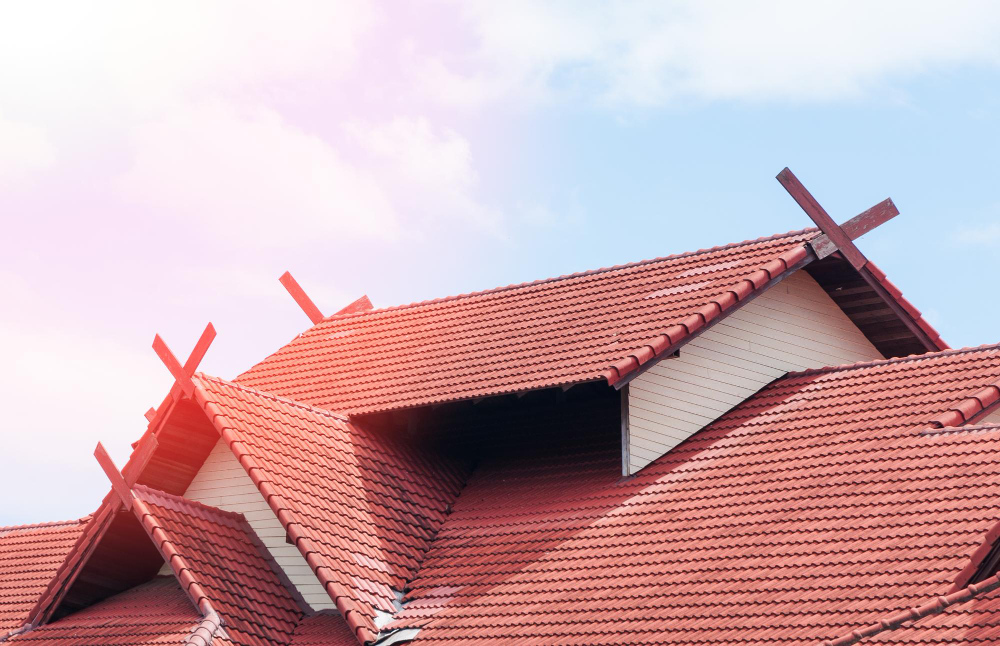Last updated on
Your roof is one of the most crucial components of your home’s structure. It protects you and your belongings from the elements, providing shelter and security. However, over time, wear and tear can take a toll on your roof, leading to potential leaks, damage, and other issues.
Knowing when it’s time for roof repair or replacement is essential for maintaining the integrity of your home. In this guide, we’ll explore how to determine if your roof needs repair or replacement.
Consult with a Professional

Consulting with a professional roofing contractor is essential for accurate assessment. These experts have the knowledge and experience to conduct thorough inspections, pinpoint any underlying issues, and offer tailored solutions to address them.
By entrusting your roof evaluation to a qualified contractor, you can gain valuable insights into the condition of your roof and make informed decisions regarding repairs or replacements, the professional team at wisebuildersrnr.com explains. Their expertise ensures that any necessary work is carried out efficiently, effectively, and in line with your budget and preferences.
Inspect Regularly
Regular inspections are paramount for maintaining the health of your roof. These inspections allow you to identify potential issues early on, preventing them from escalating into costly repairs or replacements.
During these inspections, carefully examine your roof for any signs of damage, including missing or damaged shingles, areas of sagging, or visible leaks. It’s recommended to conduct inspections at least twice a year, ideally in the spring and fall, to coincide with seasonal changes and ensure your roof is prepared for the elements.
Additionally, after severe weather events such as storms or high winds, it’s crucial to inspect your roof for any new damage that may have occurred.
Check for Leaks

Water stains on your ceiling or walls are clear indicators of a leaky roof. If you notice any signs of water damage inside your home, it’s crucial to address the issue promptly. However, keep in mind that leaks can sometimes be challenging to locate, so it may be necessary to enlist the help of a professional roofing contractor for a thorough inspection.
Assess Shingle Condition
The condition of your shingles can provide valuable insight into the overall health of your roof. Look for signs of wear such as curling, cracking, or missing shingles. Additionally, check for granule loss, which can indicate the aging of the shingles. If your shingles are showing significant signs of deterioration, it may be time for a roof replacement.
Evaluate Roof Age
Consider the age of your roof when determining whether repair or replacement is necessary. Most asphalt shingle roofs have a lifespan of 20 to 30 years, depending on various factors such as climate and maintenance. If your roof is approaching the end of its expected lifespan or if it has already surpassed it, replacement may be the best course of action.
Check Flashing and Seals
Flashing and sealing around chimneys, vents, skylights, and other roof penetrations are critical for preventing water infiltration. Inspect these areas for signs of damage or deterioration, such as rust, cracks, or missing sealant. Damaged flashing and seals can compromise the integrity of your roof and lead to leaks if not addressed promptly. It’s essential to maintain these regularly and consider updating your rubber sealants to keep your roof watertight and secure.
Assess Structural Integrity
Sagging areas or visible dips in your roof’s structure can indicate underlying structural issues that require immediate attention. These issues can be caused by water damage, inadequate support, or age-related deterioration. A professional roofing contractor can assess the structural integrity of your roof and recommend the necessary repairs or replacements.
Consider Energy Efficiency
An inefficient roof can contribute to higher energy bills by allowing heat to escape during the winter and hot air to penetrate during the summer. If you notice significant fluctuations in your energy costs or if your home struggles to maintain a comfortable temperature, it may be worth considering a roof replacement with more energy-efficient materials.
Factor in Cost and ROI
When deciding between roof repair and replacement, consider the cost of each option as well as the potential return on investment (ROI). While repairs may offer a temporary solution, a roof replacement may provide long-term benefits such as improved durability, energy efficiency, and increased property value. Evaluate your budget and weigh the pros and cons of each option before making a decision.
The Takeaway
Knowing how to determine if your roof needs repair or replacement is essential for maintaining the safety, integrity, and value of your home. By conducting regular inspections, assessing the condition of your shingles, checking for leaks, and consulting with a professional roofing contractor, you can make informed decisions about the best course of action for your roof.
Whether it’s minor repairs or a complete replacement, investing in your roof’s upkeep is an investment in the longevity and comfort of your home.
Table of Contents




